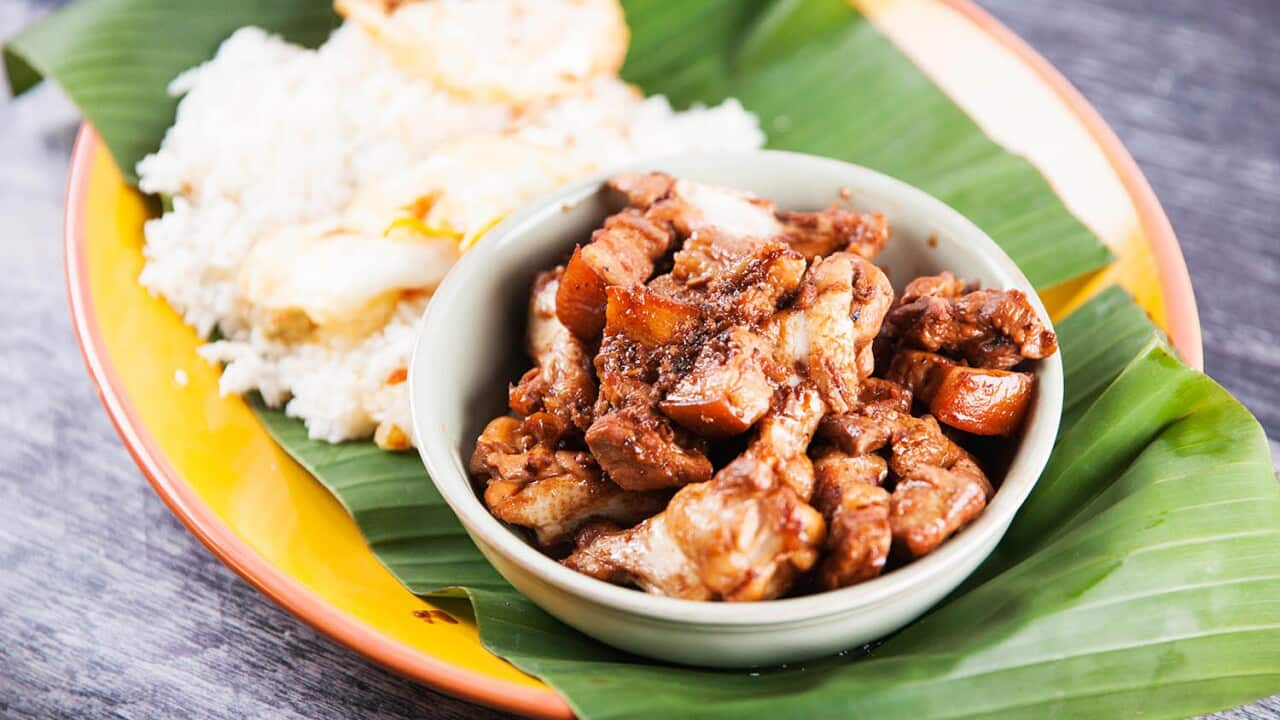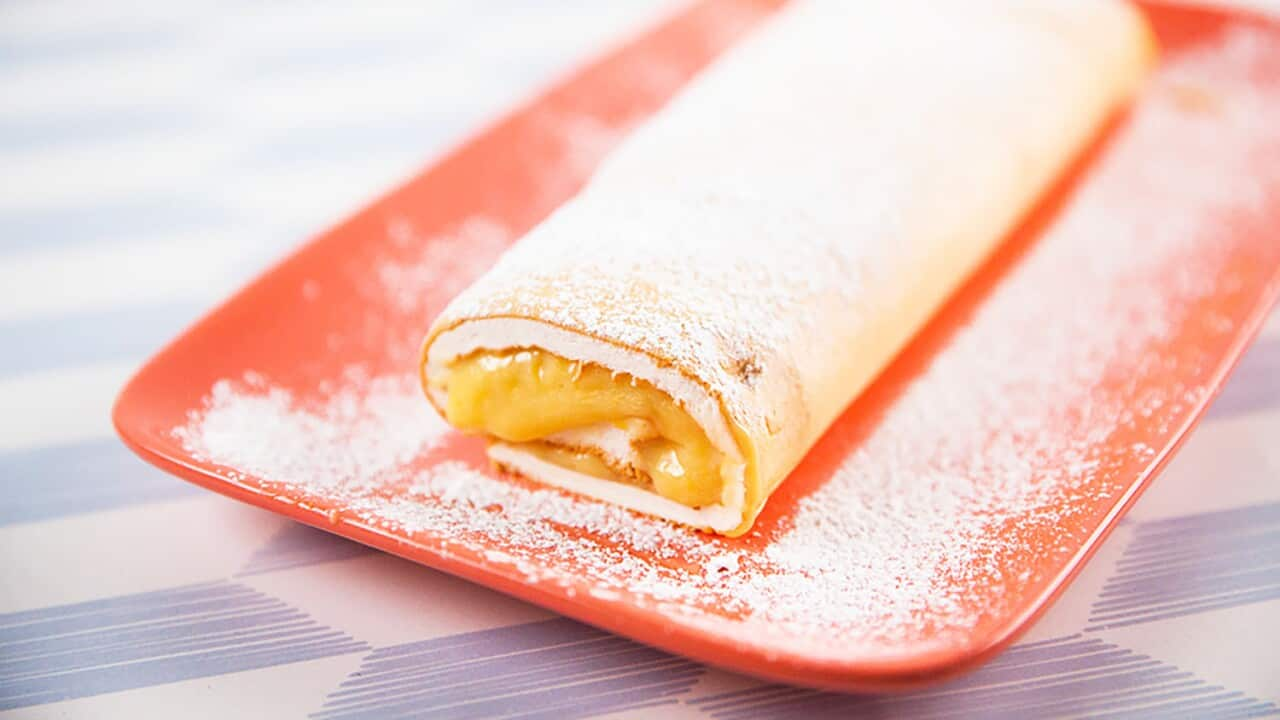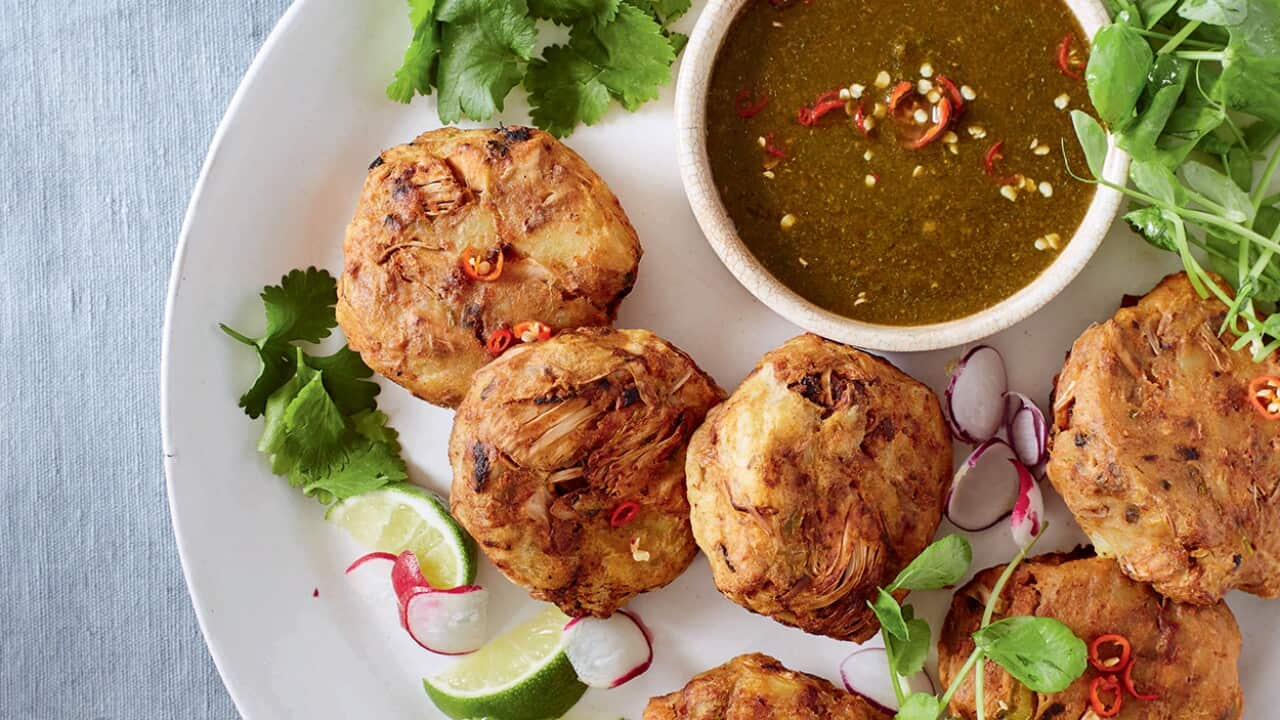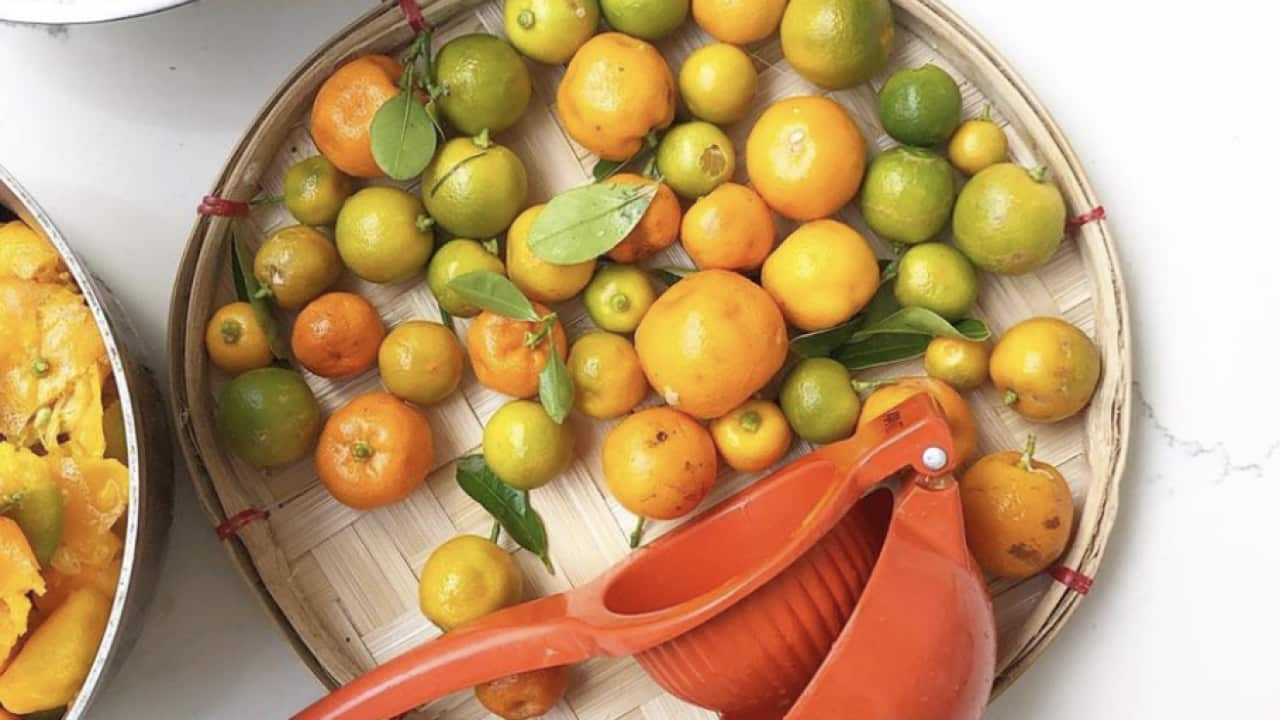“I moved from the Philippines when I was very young. There’s that nostalgia when you go back home," says chef . "Every time you see the ice-cream man pull up, you hear the little bell and he [has] got this cart. It’s a really touching moment because it gathers everyone together."
These ice-cream carts inspired in Melbourne last year with his business partner, Minh Duong. “Kariton” is the Tagalog word for “cart” and .
“We call it dirty ice-cream in the Philippines for two reasons: it’s dirt cheap, 20 cents a scoop, and it’s sold out of the streets,” explains Rivera. “My family were like, ‘are you sure you want to call it dirty ice-cream?’ But it’s such a conversation starter. I’m proud of it; it’s part of the culture.”
Duong grew up around similar ice-cream carts in Vietnam, and was reintroduced to them early last year when visiting the Philippines for Rivera’s wedding: “It was very hot, very humid. I was in the middle of with my little one. A random dude pulled up a cart with sorbetes. I went for avocado and she went for cheese but she threw the cheese at me. I ended up with the cheese and she ended up with the avocado,” he recalls, smiling.
From a bread class to tubs of gelato
Rivera and Duong have been friends since meeting in a bread class when studying patisserie at the .
After school, they both went on to work in fine-dining restaurants, with Duong staying on track as a pastry chef, and Rivera veering towards savoury dishes.
During last year’s long lockdown in Melbourne, they joined forces again to create Kariton Sorbetes.
My family were like, ‘are you sure you want to call it dirty ice-cream?’ But it’s such a conversation starter. I’m proud of it; it’s part of the culture.
“We wanted it to be different. Most gelato shops have all the same flavours. We wanted something more ‘us’, with more Southeast Asian flavours,” explains Duong.
Each tub of gelato also comes covered in toppings like jam, caramel, crumble and tapioca pearls.
“I’m the guy who just shouts out ideas and Minh is the one that has to make sure those ideas actually work,” says Rivera, laughing. “Creatively, we both work on components, and Minh is the mastermind when it comes to formula. I have flavour ideas and memories in my head from the Philippines.”
Filipino desserts, snacks and drinks reinvented as frozen treats
Kariton Sorbetes’ signature gelato is ube halaya. Because the purple yam is such a staple in Filipino desserts, they knew they had to nail this flavour. The ube gelato is covered in a , a blackberry jam to cut through the earthiness and (caramelised coconut curds). “That’s never going to come off the menu,” says Rivera.
The turon gelato is a riff on a , a popular street food. The gelato is made with very ripe banana, then topped with muscovado caramel, candied sesame seeds, sweet jackfruit and pieces of caramelised spring roll wrappers.
For the keso gelato, Rivera and Duong created savoury vanilla and cheddar gelato, which they turned into a Filipino version of cheese and crackers by adding roasted cashews, lashings of cheddar and crushed SkyFlakes (the "Salada of the Philippines", says Rivera).
Kariton Sorbetes has a repertoire of over 20 flavours, rotating weekly. They are inspired by Filipino desserts, snacks, dishes and produce. So keep an eye out on the weekly offering if you’d like to try , or in gelato form.
You can currently to get Kariton Sorbetes delivered to your door. Rivera and Duong’s upcoming plans include making ice-cream cakes, taking a kariton around town to events, and looking into opening a permanent location in Melbourne.
“, and as bold as that statement is, it rings pretty true as to what kind of concept we’re going for,” says Rivera.
Filipino flavours

Everything you need to know about adobo








